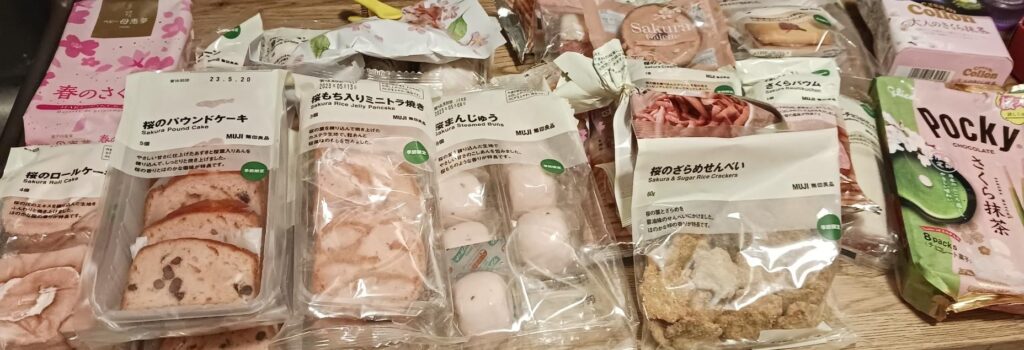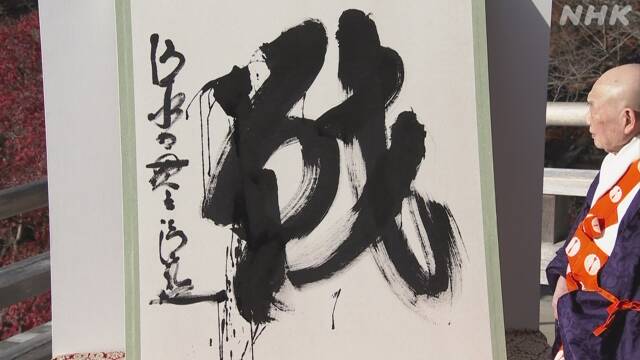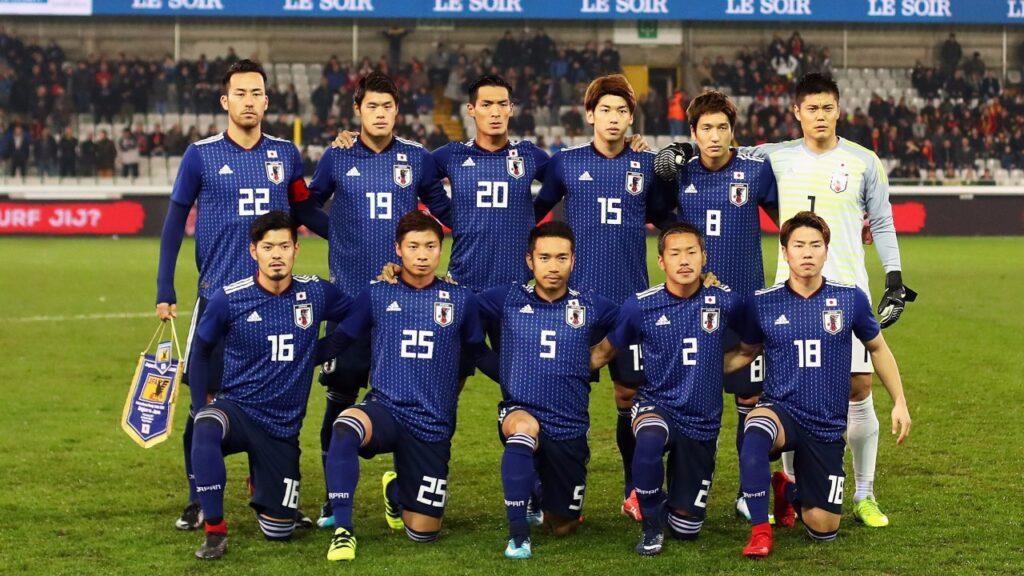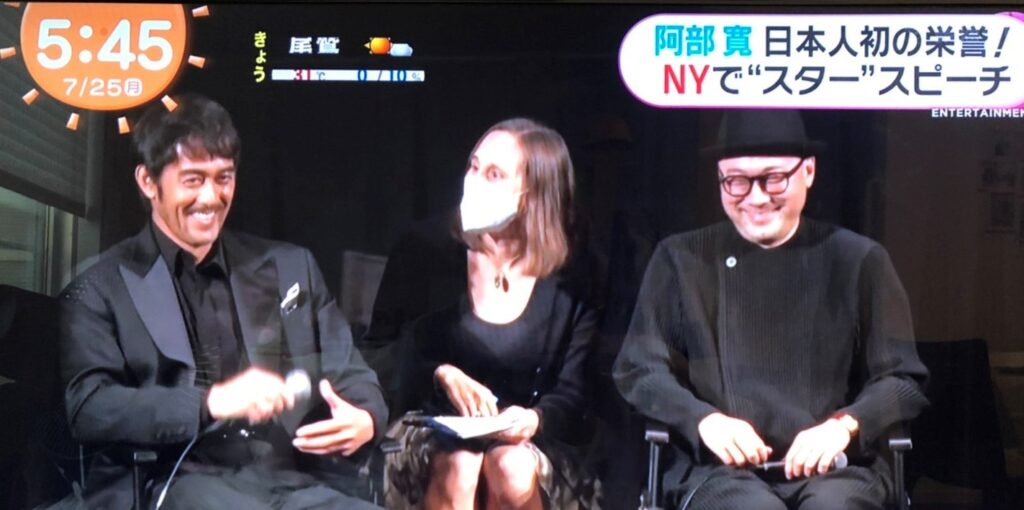WIT Life #371: Made in Japan exhibition at Poster House
Interpreter/Translator/Writer Stacy Smith (Kumamoto-ken CIR, 2000-03) presents WIT Life, a periodic series about aspects of Japanese culture such as art, film, food and language. Stacy starts her day by watching Fujisankei’s newscast in Japanese, and here she offers some interesting tidbits and trends along with her own observations.
Yesterday I had the chance to check out the Made in Japan: 20th Century Poster Art exhibition that opened this March at Chelsea-based Poster House. This is the first museum in the U.S. dedicated exclusively to posters, and I was excited to visit in person as I’ve joined many of their online programs. The museum is modest in size, but it packs a punch in terms of content (the Japan exhibition is on the main floor, but the basement space currently features a powerful Black Panther Party exhibit).
Made in Japan begins with wartime propaganda, such as picture sugoroku (a board game similar to Chutes and Ladders) urging women to support the war effort. Later versions of the games encouraged consumers to shop at department stores, and the exhibition’s array of commercial posters even includes Playboy sugoroku games. They are dynamically colored and the goal is to reach scantily clad actress Kikko Matsuoka. Each number has instructions like: “Use body paint to draw a face on your back,” “Shake a can of beer 20 times then open it,” and “Starting tomorrow, cross dress and go to school or work like that.”

WIT Life #370: A Month in the Life
Interpreter/Translator/Writer Stacy Smith (Kumamoto-ken CIR, 2000-03) presents WIT Life, a periodic series about aspects of Japanese culture such as art, film, food and language. Stacy starts her day by watching Fujisankei’s newscast in Japanese, and here she offers some interesting tidbits and trends along with her own observations.
As a freelance interpreter, I often get asked about who comprises my client base or what my typical schedule is. My schedule is anything but regular, something I would imagine is common to many freelancers. It actually was the JET Program that introduced me to the idea of incredible variety within a daily schedule, as in my role as CIR one day I’d be sharing aspects of my home town with elementary school kids and running around on the playground with them, and the next I’d be a speaker in a panel discussion about internationalization for the community. I loved the fact that what I did every day was never the same as it kept me on my toes, and I have incorporated that spirit into my current work life. Nowhere was this more evident than over the last month, during which I enjoyed a great range of interpreting assignments.

May began slowly with a handful of jobs within the New York State Court System. I’m primarily needed in Family Courts throughout the boroughs or state to interpret for cases regarding divorce, custody, and child support or child abuse, or Civil Courts for landlord/tenant and other housing matters, but I also sometimes have cases at Surrogate’s Court regarding guardianship or Criminal Court for cases of a very serious nature. During Covid all types of cases were carried out virtually, but recently more have been taking place in person.
The second week of May brought the arrival from Japan of Sayaka Murata, author of the acclaimed Convenience Store Woman. I had first interpreted for her in 2018 when that book had been translated into English, and this time we would be working together in conjunction with the release of the English version of her short story collection Life Ceremony (in between these two publications, her stellar novel Earthlings has also come out in English). At the PEN World Voices Festival, Murata-san was part of an all-female author panel focusing on the theme of friendship. The following week I joined her and her publisher in visiting a handful of bookstores throughout the city to sign copies of Life Ceremony. It was fun for me to facilitate her interactions with book sellers, and for Murata-san to get back to old favorites like Three Lives & Company as well as to discover new bookstores like Yu & Me Books.
Read MoreWIT Life #369: Sakura-filled spring and Plan 75
Interpreter/Translator/Writer Stacy Smith (Kumamoto-ken CIR, 2000-03) presents WIT Life, a periodic series about aspects of Japanese culture such as art, film, food and language. Stacy starts her day by watching Fujisankei’s newscast in Japanese, and here she offers some interesting tidbits and trends along with her own observations.
Happy spring! It’s hard to believe that May is right around the corner. Earlier this year I spent two weeks in Japan (my first trip in six years, after a few stops and starts during Covid), and timed it extremely well to catch the 桜 (sakura, or cherry blossoms) at their peak in two of the four cities I visited. One was Kyoto, which is always a special place for me to return to as it is where I studied abroad during my first time in Japan. The other was Kumamoto, where I lived for three years during my time as a JET. It was a fantastic homecoming filled with long-overdue reunions, delicious food, 温泉 (onsen, or hot springs) and お花見 (ohanami, or cherry blossom viewing). I don’t know when my next trip will be, but here’s hoping it’s sooner than another six years!
When I returned to the U.S. everything was in full bloom, so I felt lucky to be able to enjoy a double spring. I love this season with its wonderfully warm afternoons, as well as chilly mornings and nights where hot tea hits the spot. I brought back sakura tea and a wide assortment of other cherry blossom goods, so hopefully those will tide me over when I start missing Japan…

Yesterday I had the chance to see the Cannes award-winning film Plan 75, which is showing at IFC Center through Friday. The title refers to a Japanese government program that encourages the elderly to terminate their own lives (and will subsidize this), as a way of relieving this demographic’s social and economic burdens. The film follows the three main characters of a 78-year old woman considering Plan 75, a young civil servant working on behalf of the plan, and a Filipino health care worker who ends up working for the plan. Each goes through their own personal journey over the course of the film’s almost two-hour duration, changing the way they view the plan and their roles in relation to it. The weight of this dystopian film makes it anything but an easy watch, but its heaviness is commensurate to the heft of the premise.
Read MoreWIT Life #368: 今年の漢字
Interpreter/Translator/Writer Stacy Smith (Kumamoto-ken CIR, 2000-03) presents WIT Life, a periodic series about aspects of Japanese culture such as art, film, food and language. Stacy starts her day by watching Fujisankei’s newscast in Japanese, and here she offers some interesting tidbits and trends along with her own observations.
2022’s Kanji of the Year was announced earlier this month as 戦 (sen/ikusa), which means fight or battle. It is part of 戦争 (sensou or war) and both 戦う and 戦い (tatakau/tatakai, meaning to fight/a fight). 戦 won with 10804 or almost 5% of the votes, followed by the close second of 安 (an/yasu, meaning secure/cheap) which came in at 10616 votes. Lagging behind in third with 7999 votes was 楽 (raku, meaning easy or relaxed) or fun when it is used in 楽しい (tanoshii). Fun piece of trivia: this is the second time 戦 was chosen as Kanji of the Year, following its selection in 2001 after 9/11 shifted the world into fighting mode.

One of the reasons for 戦’s selection was this year’s invasion of Ukraine by Russia and North Korea’s repeated missile launches. Other fights were of the non-military kind, such as how Japanese struggled to maintain their livelihoods amongst the weakening yen, rising prices, energy shortages and ever-present Covid.
There was also a sports angle, as some voters picked 戦 to commemorate the outstanding efforts of Japanese athletes. Most striking was their World Cup soccer team who surprisingly defeated Germany, Spain and other tough opponents to make it to the Round of 16. In addition, Japanese sports stars had a strong showing at the Beijing Winter Olympics, and in the baseball world Shohei Ohtani continued to rock MLB and Aki Sasaki became the youngest perfect game-pitcher in Japanese professional baseball history.
Read MoreWIT Life #367: Ganbare Samurai Blue!
Interpreter/Translator/Writer Stacy Smith (Kumamoto-ken CIR, 2000-03) presents WIT Life, a periodic series about aspects of Japanese culture such as art, film, food and language. Stacy starts her day by watching Fujisankei’s newscast in Japanese, and here she offers some interesting tidbits and trends along with her own observations.
All you soccer (or should I say football) fans out there have probably been busy watching the World Cup. I don’t follow soccer, but am excited to see how far Japan has gotten and will be cheering Samurai Blue on in their match with Spain tomorrow. It’s also been nice to see Japanese fans receive recognition for their attention to the stadium’s cleanliness. I particularly like this image of the Japanese team’s locker room following their upset victory over Germany (check out the origabmi cranes displayed in the back!).

A segment on this morning’s Japanese news interviewed some of these volunteers, and the reporter seemed to be taken by one response in regard to what motivated them: cleaning is「当たり前」(atarimae, or natural, obvious, reasonable). Another respondent replied that a clean stadium is a reflection of their pure hearts (a familiar Japanese trope). The cleaning crew’s earnestness was not only endearing but an inspiration to fans from other countries, some of whom emulated the Japanese fans after their own teams’ matches.
Read MoreWIT Life #366: 読書の秋
Interpreter/Translator/Writer Stacy Smith (Kumamoto-ken CIR, 2000-03) presents WIT Life, a periodic series about aspects of Japanese culture such as art, film, food and language. Stacy starts her day by watching Fujisankei’s newscast in Japanese, and here she offers some interesting tidbits and trends along with her own observations.
Time flies and hard to believe that we are already at the beginning of fall. For all of you bookworms like myself, as the title says this season is often called 読書の秋 (dokusho no aki or “autumn is for reading)”. Alternatively, for those who love pumpkin spice and everything nice, it is also known as 食欲の秋 (shokuyoku no aki or “season of good appetite”/”fall is for eating”). Other versions include 実りの秋 (minori no aki or “the harvest season”), 芸術の秋 (geijutsu no aki or “best season for enjoying art”), and スポーツの秋 (supo-tsu no aki or “best season for sports”).
Japan had its state funeral for former PM Shinzo Abe this week, with many waiting to offer their condolences and many others offering vociferous protest. His assassination has revealed the deep connections between the Liberal Democratic Party and the Unification Church, the repercussions of which are yet to be seen. This NYT article from earlier in the month touches on the relationship between the LDP and the church, in the context of Japan’s thriving telegram industry. For a heart-warming read, check out this other NYT article which talks about “baby workers” in Japan’s nursing homes.
On a personal note, I recently interpreted at a Japanese food event called “Taste of Japan in New York” that was held at Carnegie Hall. Many famous chefs attended from Japan, sharing their knowledge and creating one-of-a-kind menus focused on the country’s rich fermentation culture. PM Fumio Kishida was in town for the UN General Assembly and appeared at the end as a surprise guest! In his remarks, he highlighted how next month Japan will loosen its Covid restrictions and once again welcome individual tourists. I’ve tried to get back to Japan twice during the pandemic, so I’m hoping three times is a charm for my visit scheduled for next year!
WIT Life #365: New York Asian Film Festival
Interpreter/Translator/Writer Stacy Smith (Kumamoto-ken CIR, 2000-03) presents WIT Life, a periodic series about aspects of Japanese culture such as art, film, food and language. Stacy starts her day by watching Fujisankei’s newscast in Japanese, and here she offers some interesting tidbits and trends along with her own observations.
The New York Asian Film Festival taking place at Lincoln Center is one of my favorite annual events, and it’s coming to a close this weekend. This year the festival celebrated its 20th anniversary, and it was back in person for the first time in two years. Over the first week, I was lucky enough to interpret for several actors, producers and directors. Particularly thrilling was being able to work with the actor Hiroshi Abe, of whom I’ve been a longtime fan. He attended the festival to receive the 2022 Screen International Star Asia Award and participate in the Q&A for his film Offbeat Cops, which had its world premiere at the festival.

My sharp-eyed friend in Japan was up early watching Fuji’s Mezamashi TV, and she was able to capture this photo of me on stage with Abe and Offbeat Cops director Eiji Uchida (to my left/right respectively in the picture). Abe plays a hard-boiled detective named Naruse who gets shunted off to the police band, and ends up going on a journey of self-discovery as a result (and learns how to play the drums, as the actor had to in real life!). During the Q&A, Uchida expressed his desire to make a sequel where Naruse has a showdown with the NYPD Police band, and to the delight of the crowd Abe said that he’s be up for it.
Read MoreWIT Life #364: What’s in a Name?
Interpreter/Translator/Writer Stacy Smith (Kumamoto-ken CIR, 2000-03) presents WIT Life, a periodic series about aspects of Japanese culture such as art, film, food and language. Stacy starts her day by watching Fujisankei’s newscast in Japanese, and here she offers some interesting tidbits and trends along with her own observations.
It’s been a while since I’ve written here, and it’s nice to be back. I hope that everyone’s early summers are going well! An interesting announcement was made in Tokyo this week in regard to the terminology for “childcare leave.” Previously 育休 (ikukyu) was the term used , but it was officially changed to the phrase 育業 (ikugyo). You can see that the first character, referring to “raising children” has stayed the same, but the second character for “time off” or “rest” has been changed to the one for “work.”

According to Tokyo Governor Yuriko Koike, this new terminology is more appropriate because “child-rearing is the important, valuable work of raising those who will carry our future.” Gyo indicates results achieved by putting in effort, whereas kyu is associated more with taking a break and doesn’t acknowledge the hard work involved. In a public appeal citizens were asked to come up with a new catchphrase for childcare leave, and this one was selected from almost 9000 submissions received in just a month.
Read MoreWIT Life #363: Golden Week greetings
Interpreter/Translator/Writer Stacy Smith (Kumamoto-ken CIR, 2000-03) presents WIT Life, a periodic series about aspects of Japanese culture such as art, film, food and language. Stacy starts her day by watching Fujisankei’s newscast in Japanese, and here she offers some interesting tidbits and trends along with her own observations.
Happy Golden Week 2022! Things kicked off yesterday with 昭和の日 (Showa no Hi, commemorating Showa Era emperor Hirohito’s birthday) and continue all the way through next week with 憲法記念日 (Kenpou Kinenbi or Constitution Memorial Day), みどりの日 (Midori no Hi or Greenery Day), and こどもの日 (Kodomo no Hi or Children’s Day, which actually celebrates boys with the flying carp streamers pictured below. Girls have their own holiday on March 3 for 雛祭り, or Hinamatsuri). I have many clients in town for Golden Week, so it’s nice to see that business travel from Japan has resumed.

WIT Life #362: Drive My Car gets its Oscar!
Interpreter/Translator/Writer Stacy Smith (Kumamoto-ken CIR, 2000-03) presents WIT Life, a periodic series about aspects of Japanese culture such as art, film, food and language. Stacy starts her day by watching Fujisankei’s newscast in Japanese, and here she offers some interesting tidbits and trends along with her own observations.
The Oscars this past weekend were memorable in more ways than one, but I’d like to focus on Drive My Car winning Best International Feature Film! As I mentioned in my previous post, DMC is the second Japanese film to receive this honor since Departures (おくりびと or Okuribito) in 2008. I was proud of director Ryusuke Hamaguchi for giving his acceptance speech in English, though I wish they hadn’t tried to play him off the stage twice (his finger raised to ask for more time was golden).

WIT Life #361: Making Oscar History with Drive My Car
Interpreter/Translator/Writer Stacy Smith (Kumamoto-ken CIR, 2000-03) presents WIT Life, a periodic series about aspects of Japanese culture such as art, film, food and language. Stacy starts her day by watching Fujisankei’s newscast in Japanese, and here she offers some interesting tidbits and trends along with her own observations.
I enjoyed watching the SAG Awards last night and it got me excited for the Oscars, which will take place in exactly one month. Drive My Car is the first Japanese film ever to be nominated for Best Picture in the ceremony’s 94-year history! In addition, Ryusuke Hamaguchi picked up a Directing nomination, as well as one for Adapted Screenplay with his co-writer Takamasa Oe. The film’s fourth nomination in the category of International Feature Film is the one it has the best odds of winning. If the many awards Drive My Car has already picked up at Cannes and other major film festivals are any indication, Hamaguchi and his team will be going home with at least one gold statue.

WIT Life #360: 今年の漢字
Interpreter/Translator/Writer Stacy Smith (Kumamoto-ken CIR, 2000-03) presents WIT Life, a periodic series about aspects of Japanese culture such as art, film, food and language. Stacy starts her day by watching Fujisankei’s newscast in Japanese, and here she offers some interesting tidbits and trends along with her own observations.
As 2021 draws to a close, everyone is likely experiencing a variety of emotions in regard to the beginning of a new year. An article in the Washington Post surveyed more than 200 readers on the one word they would use to describe the past year. Their answers were as follows: “Relentless. Disappointing. Messy. Clarifying. Growth. Grief. Change. Survival. Fragile. Unexpected. Enlightening. Tumultuous. Transformational. Lonely.”
Japan takes a similar pulse of its nation with the annual determining of the “Kanji of the Year.” The single character selected is supposed to represent how the populace views the closing year, and for 2021 it was deemed to be 金 (kin, or money/gold). The winner beat out 輪 (rin, or circle/wheel) by only 118 votes.

According to the Japan Kanji Aptitude Testing Association that administers the voting, kin was a fitting choice because the Tokyo summer Olympics were the venue for the Japanese Olympic team’s best results ever (including 27 gold medals). The association also noted that kin begins the word 金字塔 (kinjito, or monumental achievement), pointing to the success of MLB’s American League MVP Shohei Ohtani as well as professional shogi player Sota Fujii, who became the youngest four-crown titleholder in the game’s history.
Read MoreWIT Life #359: Giving thanks
Interpreter/Translator/Writer Stacy Smith (Kumamoto-ken CIR, 2000-03) presents WIT Life, a periodic series about aspects of Japanese culture such as art, film, food and language. Stacy starts her day by watching Fujisankei’s newscast in Japanese, and here she offers some interesting tidbits and trends along with her own observations.
I hope everyone is enjoying a wonderful holiday weekend, and that your Thanksgiving was filled with lots of food, fun and family/friends! This is the season of expressing gratitude, and I can’t help but be thankful for this venue where I can share my thoughts. Specifically, I’m grateful that I began my Japanophile journey in high school and that it’s taken me this far.
My work as an interpreter is slowly starting to rebound, and I am deeply appreciative for that. I was tickled to find that there is an interpreter out there who recently received official recognition for his skills, that being none other than the Angels’ two-way superstar Shohei Ohtani’s interpreter Ippei Mizuhara.

Following Ohtani being deemed the American League’s Most Valuable Player (MVP) this year, Mizuhara received a Most Valuable Interpreter (MVI) award from the Angels. On Twitter, fans wholeheartedly agreed with the team’s sentiment: “The existence of Ippei is indispensable not only for Shohei, but for all of us.”
Read MoreWIT Life #358: LA eats Japan
Interpreter/Translator/Writer Stacy Smith (Kumamoto-ken CIR, 2000-03) presents WIT Life, a periodic series about aspects of Japanese culture such as art, film, food and language. Stacy starts her day by watching Fujisankei’s newscast in Japanese, and here she offers some interesting tidbits and trends along with her own observations.
Although the days are still balmy here in NY, we’ve had some chilly nights and mornings as we get deeper into fall. In LA however, the warm weather sticks around longer, allowing for fun outdoor activities as we move closer to winter. I’d like to share one that I wish I was able to attend in person!
LA eats Japan has been an annual food festival since 1999, and it will be held outdoors for the first time this year at Little Tokyo. This free event will be held on Sunday, November 14 from 11 am-8 pm, and is presented by the Japanese Restaurant Association of America with support from the Consulate General of Japan in LA.

There will be 17 vendors from local restaurants selling curry rice, yakitori, okonomiyaki, ramen, yakisoba and sushi, as well as sweets such as kakigori and castella. In addition to all this amazing food, there will be a cosplay costume competition with a prize of $1,000. Live performances will feature contemporary techno music, as well as traditional martial arts and music like karate and taiko. A mikoshi portable shrine will even be paraded through the streets!
For those who want to experience Japanese food, culture and sightseeing spots but aren’t able to travel at this time, I would like to recommend the Kyushu Virtual Fest to be held Thursday night. It is the second half of a two-part event, and I attended the first last night. Having lived in Kumamoto on JET, I was thrilled that they spotlighted Aso and other amazing places in the prefecture, as well as a waterfall I had never visited but hope to on my next trip. They also highlighted sites and products from Fukuoka and Kagoshima, and there were many giveaways and discounts for viewers. This event is free as well so definitely check it out!
WIT Life #357: LDP Presidential election and royal family shakeup
Interpreter/Translator/Writer Stacy Smith (Kumamoto-ken CIR, 2000-03) presents WIT Life, a periodic series about aspects of Japanese culture such as art, film, food and language. Stacy starts her day by watching Fujisankei’s newscast in Japanese, and here she offers some interesting tidbits and trends along with her own observations.
The Japanese LDP Presidential election will take place today (September 29th). The winner is expected to become the next prime minister following current PM Yoshihide Suga, leading the party in November’s general election. Here’s a run-down of the candidates, notable for being a lineup that is 50% women.

In other big news, Princess Mako of the royal family just welcomed home her fiancee, commoner Kei Komuro. When he was last in Japan over three years ago, he got engaged to Mako before coming to New York to attend Fordham Law School. They plan to marry and for Mako to return with him to New York, where he has been hired by a law firm. In renouncing her official title, she will be sacrificing almost $1.35 million in taxpayer money. Check out the Washington Post’s coverage of the palace intrigue captivating Japan (and the vitriol towards Komuro’s Covid ponytail)!

